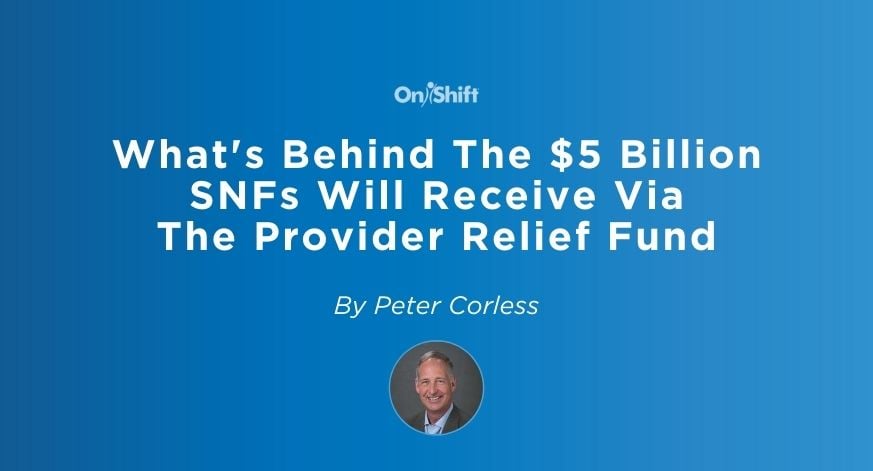July 29, 2020 | Peter Corless
July 29, 2020 | Peter Corless
 While the coronavirus pandemic continues to evolve, one thing has held constant – skilled nursing facility residents are extremely vulnerable to this highly contagious and deadly disease. And since the onset of the crisis, providers have struggled to secure adequate PPE, testing supplies and other resources to protect their residents and hardworking staff. Unfortunately, the virus remains a viable threat in many communities and will likely continue to be one until an effective vaccine is produced.
While the coronavirus pandemic continues to evolve, one thing has held constant – skilled nursing facility residents are extremely vulnerable to this highly contagious and deadly disease. And since the onset of the crisis, providers have struggled to secure adequate PPE, testing supplies and other resources to protect their residents and hardworking staff. Unfortunately, the virus remains a viable threat in many communities and will likely continue to be one until an effective vaccine is produced.
To better support these communities in keeping residents and staff members safe, the Department of Health and Human Services (HHS) will be distributing $5 billion via the Provider Relief Fund. The money is intended to be used to “address critical needs, including the hiring of additional staff, increasing testing and providing technology support so residents can connect to their families,” explained Trump during a briefing.
However, in order to receive the money, facilities must participate in an online COVID-19 training program. “The training being offered has 23 educational modules and scenario-based learning modules that include materials on cohorting strategies and using telehealth in nursing homes to assist facilities as they continue to work to mitigate the virus spread in their facilities,” CMS explained in a press release.
When this announcement was first made, several of my colleagues asked, how meaningful will this new round of funding be to struggling communities? After all, previous distributions have been helpful but feedback has always been that it was not nearly enough financial support.
My response was that we don’t know specifically how much money each SNF will receive, but that the average is around $330k. These funds could be used for any number of things, including the cost of PPE and additional testing on top of the 15,000 testing devices CMS announced they will distribute this week.
These funds could also help facilities hire more staff to provide that extra level of care and support that residents need during this time, including that of additional nurses or aides. I’m sure we will see communities expanding their recruiting efforts and getting creative to tap into the large pool of unemployed workers displaced due to the pandemic. Many will use the money to not only pay these new staff members, but to invest in processes and systems to help them hire candidates more efficiently now and in the future.
In the end, every bit does help. If I know one thing, providers will be smart in spending this money -- as they always are -- and do all that they can to protect and support staff and uphold their mission to provide quality resident care at all costs.
Subscribe to the OnShift Blog
Recent Posts
Categories
About Peter Corless
Peter Corless is Executive Vice President of Enterprise Development for OnShift. Peter is a recognized HR leader in post-acute care and is well-known for his achievements at some of the country’s largest post-acute care organizations, including Kindred Healthcare and Genesis HealthCare. As an experienced, chief administrative and human resources officer within these organizations, he developed strategies that reduced turnover, improved recruiting and hiring strategies, and reduced labor costs.
See for yourself why thousands of providers rely on OnShift’s innovative software for recruitment, hiring, workforce management, pay and engagement. Request your personalized demo today.
